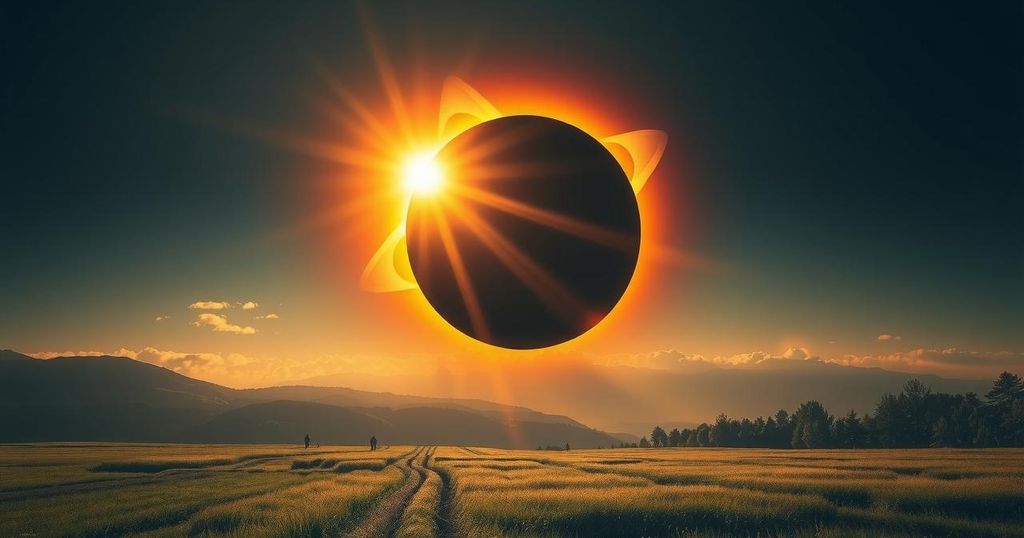The first solar eclipse of 2025 is a partial solar eclipse occurring on March 29, visible in several regions globally but not in India. Vedic astrology considers this time inauspicious, with recommendations to refrain from eating. Eye protection is important during observation.
Sky enthusiasts are in for a treat as the first solar eclipse of 2025, a partial solar eclipse, will occur on Saturday. This anticipated event is generating excitement among spectators globally, heralding the year’s initial Surya Grahan.
Vedic astrology regards the timing of Surya Grahan as inauspicious, and it is customary for individuals to avoid consumption of food and beverages during this phenomenon. Engaging in meditation is often suggested as a beneficial practice during the eclipse.
The eclipse will be observable in regions across Asia, Africa, Europe, the Atlantic and Arctic Oceans, as well as North and South America. However, it is important to note that this partial solar eclipse will not be visible within India due to geographical factors.
According to NASA, the eclipse will be seen in Europe, Northwestern Africa, Greenland, Iceland, and parts of the northeastern United States and eastern Canada. In contrast, the moon’s shadow will not cover India, rendering it invisible there.
In Indian Standard Time (IST), the partial solar eclipse will commence at 2:21 PM and conclude at 6:14 PM, with its peak occurring at 4:17 PM. The global duration of the eclipse is projected to be 3 hours and 53 minutes. For audiences in the United States, the eclipse will begin at 4:50 AM EDT, peak at 6:47 AM EDT, and finish by 8:43 AM EDT.
It is crucial to utilize appropriate eye protection, such as eclipse glasses, when observing the solar eclipse to safeguard one’s eyes from harmful ultraviolet rays.
The first solar eclipse of 2025, a partial solar eclipse, offers an exciting opportunity for global viewers. While the eclipse will be visible in various regions, it will not be seen in India. The event will occur on March 29, with specific timings for different regions, and proper eye protection is essential for safe observation.
Original Source: www.livemint.com






